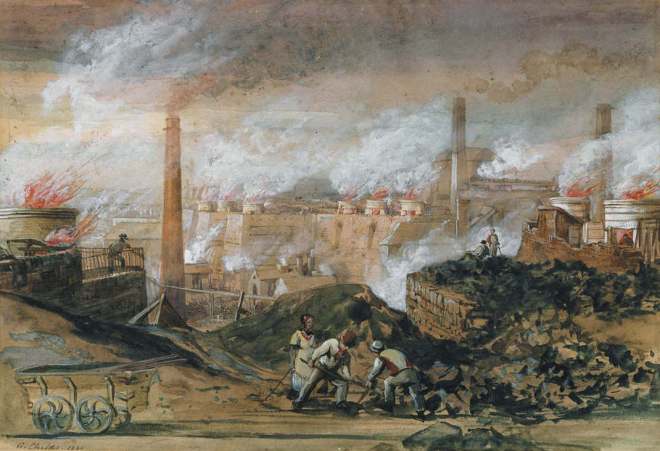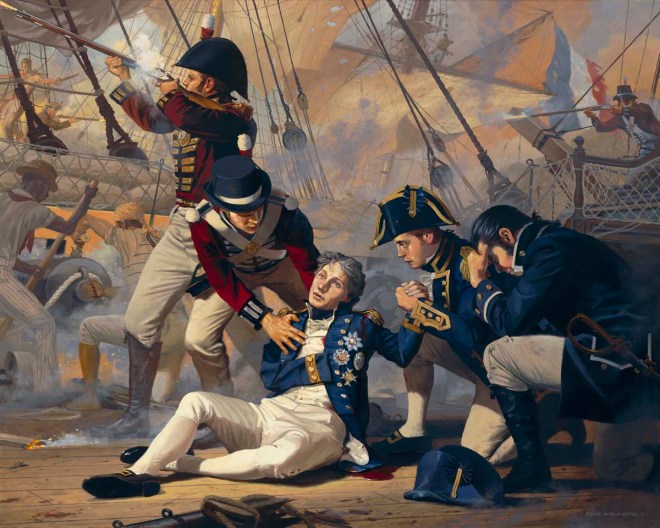Much of the research into my family and those of my nearest and dearest has been mundane in the extreme, Agricultural labourers abound, no matter what part of the country they come from Ag Labs is a common occupation. As I’ve said before occasionally you come across a bit of a different story, a vicar, a boatman or in the case of my missus one of the Guests from Guest Keen and Nettlefold fame (more of that at a later date).
Today’s bit of excitement, if it isn’t too indelicate to call it that, comes from the Malaband side of my family and concerns the younger brother of my 4x Gt Grandmother Ann Rees.
Now young Edward Rees(Reece) was an Ag Lab, a simple sort of fellow born in Penterry, Monmouthshire as were all his siblings and both of his parents. Now none of this so far is unusual, generations would live and die in the same small village without much contact with the outside world beyond the occasional visit to the local market on market day, a lifetime governed by the seasons and the needs of the land. His life however ended with a short sharp drop, hung as a murderer, but that wasn’t the end of the story, a local am-dram society ‘Penterry Pantomaniacs’ 167 years later recreated the events in a play and a sequel to investigate whether Edward was indeed guilty of the crime he was executed for. Is this how you spell indelicate? (Kidding!)
Penterry website
PENTERRY IN THE 1840s
The Penterry of the 1841 census consisted of 9 inhabited houses with 20 male and 18 female inhabitants. John James and his family lived at Penterry Farm and other householders were Robert Brown, John Moxley, John Phillips, James Morgan, Richard Jones, Ann Reece, Jane Reece and another Ann Reece.
The Tithe Map of 1844 shows two major landowners, the Duke of Beaufort and Nathaniel Wells of Piercefield Park. Four other owners and 11 tenants are named.
Other sources of information are the church records with many names featuring in the Baptism, Marriage and Burial records as many lived in Penterry all their lives.
Back to Edward, born in 1817, the year Jane Austen had Northanger Abbey published, Waterloo Bridge was opened and the country was still recovering from war with Napoleon’s France, in Bombay HMS Trincomalee was launched, a ship that is still afloat as a museum ship in Hartlepool harbour the oldest British warship still afloat. I doubt Edward ever heard of Jane Austen, he certainly never visited London to see Waterloo bridge and beyond jokes about Boney and war stories from veterans of the wars against France I don’t think he thought too much about the state of the European political scene. The Reece family lived at Bantwm in 1841. Jane Reece was the head of her household, her husband, Edmund, having died in 1835. She lived with her children, Edmond and Nicholas, then aged 25, Edward aged 20 (all labourers) and her daughter, Elizabeth, aged 15. Jane is described on the census as a farmer and is listed as a tenant on the 1844 Tithe Map. (Age discrepancy was due to how the 1841 census was recorded, age being rounded to the nearest 5)
Church records show that Jane (nee Morgan) and Edmund were married at St. Mary’s Penterry on 17th August 1795. Nicholas, Edward and Elizabeth were all baptised at Penterry. Edward had married Betsy Jones the week before the murder. She had been in service in Bristol but had been taken ill and returned to live with her father and step-mother until she recovered. On meeting Reece who urged her to become his wife, she agreed on the understanding that she returned to service until they could afford to furnish a home. He assured her that he expected soon to receive a sum of money and they were married at St. Briavels on 27th November 1842.
Just a week later Mary Moxley was found battered to death in the lane outside her house at about one o’clock on the Saturday, having been seen and spoken to by various locals in the hours before her death. Beside the body was a heavy hedge stake which was stained with blood. Blood was also found in the house and along the path to the lane, suggesting that she had first been attacked inside.
When the news reached Chepstow, the police and John Moxley hurried to the spot and enquiries began. According to the press reports at the time which were never fully explained, John Moxley stated that he believed Edward Rees to be the murderer and the following day Edward and his wife were taken into custody. She would be later released.
THE MOXLEY FAMILY
John Moxley lived with his daughter, Mary, in a cottage alongside the road in Banton, Penterry. In 1842, he was about 60 years old, born about 1781 in Chapel Hill and his daughter was 37. Some 8 years previously, she had given birth to an illegitimate daughter, Ann, who was baptised in Penterry in 1834 and buried there in 1836 aged two.
John Moxley was listed as an owner and tenant of Nathaniel Wells on the Tithe Map of 1844. He owned his house and garden and rented some pasture land around the property. He also kept cows and pigs, some of which he had sold the week before. His neighbours might have been aware that he would have kept the money from the sale in his house.
His cottage was small and faced the lane which led from Fairoak to St. Arvans, some few hundred yards from Penterry Church. There were three or four other houses nearby.
He went regularly to Chepstow market on Saturdays which would also have been known by those who lived nearby. The Monmouthshire Merlin of the time refers to Moxley as “an industrious man of frugal habits ….And his daughter of a similar disposition.”
At the time of the Moxley murder, a coroner was required to conduct an inquest, with a jury, into any suspicious death. He would hear evidence from witnesses and a verdict of unlawful killing was the equivalent of an indictment for murder. Publication of reports of these hearings was, as now, prohibited but a full account can be found in the Monmouthshire papers of the time!
The Monday after the murder, the inquest was held by the coroner, Mr. Brewer, and a great number of people were present. They first went to the Moxley cottage where the coroner and the jury – appointed from the local gentry present – viewed the body. Edward Reece, in custody, was brought forward and looked at the body, apparently with indifference, declaring that he knew nothing of the murder.
The crowd then adjourned to Red House (now known as Woodpecker Cottage) some few hundred yards away to continue the proceedings. It is believed that the inquest was held in a stone barn which stood next to the cottage as the size would have been more suitable for the occasion.
The inquest continued all day and on the following Thursday and Friday when a verdict of wilful murder was returned against Edward Reece who was committed for trial at the next County Assizes.
THE TRIAL
Monmouth was part of the Oxford Circuit and the next Assize court was held in April 1843. The accused at the time had no right to see a copy of the indictment to check the details and, as the accused had to pay for his own legal assistance or conduct his defence in person, it is likely that his counsel was assigned to him by the Judge. Thus, Mr. Keating would have learned about the case only from the evidence as it was given and was forced to consider his witnesses and line of defence as he went along. Perhaps this is why neither Reece nor his wife were called as witnesses. Perhaps Mr. Keating did his best after all.
Many witnesses were called by the prosecution but all could only offer circumstantial evidence. Mr. Keating summed up the case with a “forcible and pathetic appeal” according to the Monmouthshire Beacon.
The trial lasted the whole day from nine o’clock on Tuesday morning until the court rose at half-past one on the following morning. The jury took only from 11.20pm until 1 am to deliberate on such a complicated case and having found the accused guilty, he was sentenced to death by the Judge wearing his black cap.
Reece apparently showed little emotion at his fate and sat down resting his head on his hand.
THE EXECUTION
Reece received a final visit from his wife on the Saturday before the date set for his execution and she was carried from the room afterwards in a state of great distress having urged him to confess his guilt.
Having confessed his guilt to the prison governor at midnight on the Sunday, Reece was taken to the condemned cell where he apparently slept soundly. The Chaplain came to him at seven o’clock in the morning and prayed with him. He wrote two letters when he woke, one to his wife and one to his mother and received communion from the priest at 11 o’clock.
Then, his arms were pinioned behind his back and he was conducted in a procession to the scaffold. There, the rope was adjusted, the cap put on his head and he was allowed to address the crowd which he did at some length, thanking the Chaplain, the Governor and the turnkeys for their kindness. The cap was then “pulled over his face, and as the drop fell and the town clock struck twelve, he made a convulsive clutch of the rope with his hands, which were immediately removed by the executioner; and although we could observe that life did not depart for some minutes, he did not appear to suffer much. Thus ended the life of Edward Reece.” Monmouthshire Merlin 29.4.1843
THE CONFESSION
“I went to John Moxley’s house in disguise, and asked to light my pipe. Mary Moxley was in the house, and tried to push me out three times. She said she would have me taken up and sent to prison. Then we had a sharp scuffle, and she struck me with a hammer on the forehead. I then struck her on the head with a hacker. The same hacker was produced before the coroner on the Friday. I took the hedge-stake there to force open the door. I took the money, but I think it was more than what the old man said. I do not think he knew how much was taken. It was not my intention to kill her a quarter of an hour before it happened, and cannot tell what possessed me. I do not think the bank note is changed, but it is not in the possession of any of my family – perhaps it may be found, but I cannot tell you exactly where it is. I was in the place where Mr. Roberts saw me but some of the witnesses said more than was true; but I was the man who done the deed. I never took anything, nor hurted any person in my life before.”
Rees allegedly made this statement to the prison governor, Mr. Barrett, at midnight before his execution, having previously made a general admission of guilt a few hours earlier. Rees asked that it should not be made known until after his death.
Newspaper report of the execution of Edward Rees(Reece)

